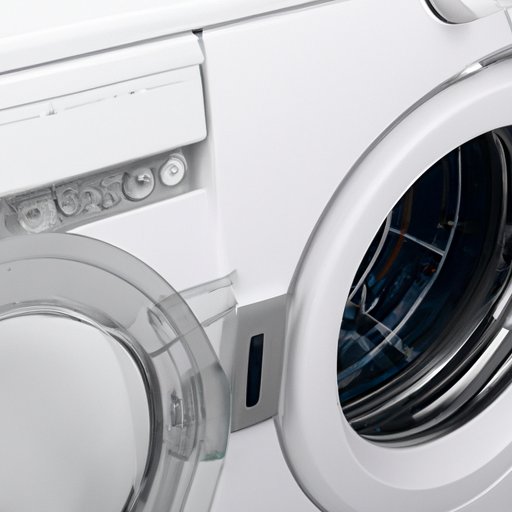
Introduction
Cleaning your front load washing machine may not be the most exciting task you can think of, but it is crucial for the longevity and efficiency of the machine. Plus, a clean washing machine means cleaner clothes!
In this article, we will provide a step-by-step guide on how to clean a front load washing machine, review different cleaning products, discuss common mistakes people make, offer DIY remedies, and provide maintenance tips.
Whether you are a seasoned homeowner or a renter, this guide is for you!
Step-by-Step Guide
Step 1: Wipe the door gasket and drum – Use a clean, damp cloth to wipe the door gasket and drum after each use to prevent mold and mildew from accumulating.
Step 2: Run a cleaning cycle – Many front load washing machines have a self-cleaning cycle. Follow the manufacturer’s instructions to run a cleaning cycle with hot water and cleaning solution.
Step 3: Clean the detergent dispenser – Remove the dispenser drawer and clean it thoroughly with warm water and a mild detergent. Make sure it is completely dry before returning it to the machine.
Step 4: Clean the exterior – Wipe the exterior of the machine with a damp cloth and mild detergent. Avoid abrasive cleaners or sponges that can scratch the surface.
Product Reviews
There are many cleaning products designed specifically for front load washing machines. Here are some of our top picks:
– Affresh Washer Machine Cleaner: This cleaning tablet is specifically designed for front load machines. It is easy to use and effective in removing odor and residue buildup.
– Tide Washing Machine Cleaner: This product is also designed for front load machines and uses oxygenated bleach to remove stains and odor.
– Clorox Washing Machine Cleaner: This product is a bleach-based solution that is effective in removing tough stains and grime.
Common Mistakes
Here are some common mistakes people make when cleaning their front load washing machines:
– Using too much detergent: Excess detergent can create a buildup and lead to odor and mold growth.
– Closing the door after use: Leaving the door closed can prevent air circulation, leading to mold and mildew growth.
– Using the wrong cleaning products: Some products can damage the machine, so always check the manufacturer’s recommendations before using any cleaning product.
DIY Remedies
If you prefer to use natural or DIY remedies, here are some options:
– White Vinegar: Add 2 cups of white vinegar to the detergent dispenser and run a hot water cycle. Vinegar helps remove odor and buildup.
– Baking Soda: Sprinkle baking soda on the drum and run a hot water cycle. Baking soda helps remove stains and odor.
– Lemon Juice: Add 1 cup of lemon juice to the detergent dispenser and run a hot water cycle. Lemon juice helps remove odor and brightens whites.
Maintenance Tips
To keep your front load washing machine clean and well-maintained, follow these tips:
– Clean the machine once a month: Regular cleaning reduces the chances of mold and mildew growth.
– Leave the door open: Leave the door open after each use to allow air circulation and prevent mold and mildew growth.
– Wipe the drum and door gasket after each use: Wipe the drum and door gasket with a damp cloth after each use to prevent any buildup.
Conclusion
Cleaning your front load washing machine may not be the most exciting task, but it is necessary for the longevity and efficiency of the machine. Following the steps outlined in this article, using the right products, and avoiding common mistakes will help keep your machine clean and well-maintained.
Remember to clean your machine regularly, use natural and DIY remedies, and wipe the drum and door gasket after each use.




